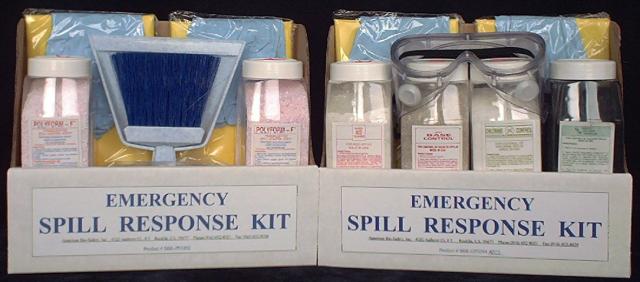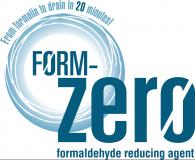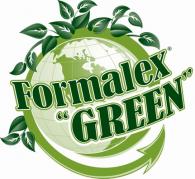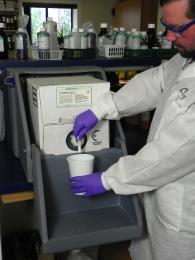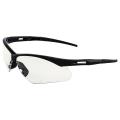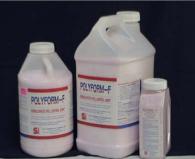Spill Response Kits
Granular make-up allows appropriate containment and neutralization of spills. Neutralizers for aldehydes, chlorine, acids and bases available. (Solvent product is absorbent.)
Packaging includes kits (pre-designed and customized) and larger individual containers.
All kits include: Safety goggles, gloves, waste bags & broom/pan.
Click here for printable instructions ![]()
SPILL RESPONSE KIT COMPONENTS:
- The Specific Control Products Ordered
- Safety Goggles
- Gloves
- Waste Bags
- Broom & Pan
SPILL RESPONSE KIT USES:
| Medical Labs | Histopathology |
| Clinical Labs | Physicians |
| Hospitals | Dentists |
| Schools | Universities |
| X-Ray Labs | Industrial Labs |
| Research Labs | Pharmacies |
| Veterinarians | Shipping/Receiving/Storage |
SOLVENT HANDLER™
Solvent Handler is a free flowing oxygen scavenging granule developed to control hydrocarbon spills. When this virtually dust-free granule is applied, the spilled material is solidified, vapors are eliminated, and flammability risk is reduced. The resulting dry solid granules can easily be swept up, leaving little evidence of the spilled liquid.
Solvent Handler™ is very effective in controlling:
- Flammable Liquids
- Hydraulic Oils
- Brake Oils
- Chlorinated Solvents
- Motor Oils
- Residual flammable liquids or sludge left in containers or storage tanks
Directions for Solvent Handler:
-
- Consult SDS for the spilled material to become familiar with its chemical properties and safety and health requirements.
- Select and wear proper personal protective equipment for the spilled chemical.
- Evacuate area as necessary to ensure safety of personnel.
- Eliminate all sources of ignition and ensure that there is adequate ventilation available before applying product.
- Apply Solvent Handler™ to spill from the upwind side around its perimeter to dike the liquid, working from the outside of the spill toward the center. Completely blanket the spill, eliminating all wet areas.
- Agitate product on the spill area with non-sparking paddle or scrapper, adding additional Solvent Handler™ as needed to eliminate all wet areas.
- Check vapor elimination, using a vapor detection device.
- Add additional Solvent Handler™ product until all vapor is eliminated.
- Dispose of neutralized waste in accordance with Federal, State, and Local environmental regulations.
NOTE: Solvent Handler™ DOES NOT reduce toxicity. When this virtually dust-free granule is applied, the spilled material is solidified, vapors are eliminated, and flammability risk is reduced. If spilled material is toxic, the treated waste remains toxic and should be treated accordingly.
| DO Use on the Following: |
DO NOT Use on the following: |
| Acetone | Large volumes in enclosed area. Be extremely careful using Solvent Handler™ on solvents with low auto-ignition temperature like “Nitromethane”. |
| Alcohols | |
| Chloroform | |
| Diesel | |
| Ethyl Acetate | |
| Gasoline | |
| Methyl Ethyl Ketone | |
| Most All Halogens | |
| Most All Hydrocarbons | |
| NN Dimethylformamide | |
| Xylene | |
| 111 Trichlorethane |
POLYFORM-F™
A very unique granular material designed to destroy formaldehyde, formaldehyde-based fixative, glutaraldehyde and other aldehyde solutions, eliminating the harmful vapors in 2 to 3 minutes. The end product is a non-hazardous biodegradable polymer, making clean up and disposal safe and easy with not formaldehyde vapors.
Directions for PolyForm-F™ Formalin/Formaldehyde Neutralizer:
-
- Consult SDS for the spilled chemical solution, to become familiar with its chemical properties and health & safety requirements.
- Select and wear proper personal protective equipment as recommended or noted on the MSDS for the spilled chemical solution.
- Evacuate area as necessary to ensure safety of personnel.
- Eliminate all sources of ignition and ensure there is adequate ventilation in the area of the spill.
- Add PolyForm-F™ Formalin/Formaldehyde Neutralizer around the perimeter of the spill to dike the liquid and prevent spreading. From the upwind side, cover the entire area from edge to edge at a ratio of approximately one-to-one, completely covering the spill and taking care to avoid vapors and splashing.
- Once PolyForm-F™ Formalin/Formaldehyde Neutralizer is applied, DO NOT MIX, allow to stand for approximately 12-15 minutes.
- Cleanup spill residue by using a plastic dust-pan and disposable towels, then place the collected spill residue in adequate waste bag.
- After spill residue has been removed from spill area, wipe up the spill area with cold tap water, using a towel, sponge or mop.
- “Post-Cleanup” the spill area with mild detergent solution recommended by your facility for the final floor and/or counter cleanup.
- In most cases, the PolyForm-F™ Formalin/Formaldehyde Neutralizer treated spill residue may be disposed of as a non-hazardous waste.
- If the spilled solutions contain heavy metals, then the material must be handled as a potential hazardous waste.
- If human or animal tissue has been in contact with the spilled formalin, then the spill residue material may be handled as a potential bio-medical waste.
- Always dispose of all spill residue waste in accordance with users’ facility recommendations and follow all Federal, State and Local environmental regulations.
| DO Use on the Following: |
| Cidex |
| Cidex – OPA |
| Formaldehyde |
| Formaldehyde Based Embalming Solution |
| Formalin |
| Glutaraldehyde |
| Metracide |
| OmniCide |
| Wavacide |
| 10% Formalin |
Also:
- Bouins Fixative – Add Polyform-F™ to destroy formaldehyde. Neutralize pH with biocarbonate or caustic soda. This will convert picric acid to sodium picrate, which can be disposed of safely.
- B-5 Fixative – Contains heavy metals, which constitutes a hazardous waste.
For more information on the Polyform F product, click here.
ACID HANDLER™
“The first line of control for most accidental releases of corrosive materials.”
This unique flowable powder was developed to facilitate the rapid and immediate control of spilled corrosive materials by:
- Solidifying and neutralizing on contact.
- Immediately stopping the spread of hazardous chemicals.
- Reducing hazardous fumes and vapors.
- Reducing the corrosiveness of spilled materials, which reduces chemical attack on floors and other surfaces, as well as on the environment.
- Producing a controlled chemical reaction, rather than the usual violent reaction associated with the neutralization of strong corrosives.
- Eliminating the disposal problems typically associated with generic sorbents.
- Producing a dry powder which can be cleaned up and disposed of as a nonhazardous waste.
Directions for Acid Handler:
- Consult SDS of spilled material to become familiar with its chemical properties and safety and health requirements.
- Select and wear proper personal protective equipment for the spilled material.
- Evacuate area as necessary to ensure the safety of all personnel.
- Eliminate all sources of ignition and ensure that there is adequate ventilation before applying product.
- Apply Acid Handler™ to the spill area, working from the upwind side and start from the outside of spill and working toward the center. If the spilled liquid is running, then apply product downstream of the spill to form a dam.
- Carefully mix with a non-reactive paddle or shovel until all liquid is solidified.
- Determine level of neutralization by using a pH test kit.
- Let solidified/neutralized material cool prior to clean up.
- Follow final clean up procedures established by your facility or company.
- Dispose of neutralized waste in accordance with Federal, State and Local environmental regulations.
| DO Use on the Following Acids: |
DO NOT Use on the following: |
| Acetic Acid | Chlorine |
| Acetic Anhydride | Concentrated Hydrofluoric Acid |
| Acetyl Chloride | Hydrogen Peroxide |
| Aluminum Chloride | Iodic Acid |
| Chlorosulfonic Acid | Oxidizers |
| Chromic Acid Solutions-Chromium Waste Haz | Pentrafluoride (“Super-Acids”) |
| Citric Acid | Picric Acid |
| Dodecylbensylsulfonic Acid | Sodium Amide |
| Formic Acid | Sulfurous Fluoride Antimony |
| Glacial Acetic Acid | |
| Hydrochloric Acid | |
| Muriatic Acid | |
| Hydrofluosilic Acid | |
| Nitric Acid | |
| Perchloric Acid | |
| Phosphoric Acid | |
| Phosphoric Anhydride | |
| Phophorous Pentoxide | |
| Phophorous Trichloride | |
| Sulfonic Acid | |
| Sulfuric Acid | |
| 54% Hydrofluoric Acid Solution |
BASE CONTROL™
“The first line of control for most accidental releases of corrosive materials.”
This unique flowable powder was developed to facilitate the rapid and immediate control of spilled corrosive materials by:
- Solidifying and neutralizing on contact.
- Immediately stopping the spread of hazardous chemicals.
- Reducing hazardous fumes and vapors.
- Reducing the corrosiveness of spilled materials, which reduces chemical attack on floors and other surfaces, as well as on the environment.
- Producing a controlled chemical reaction, rather than the usual violent reaction associated with the neutralization of strong corrosives.
- Eliminating the disposal problems typically associated with generic sorbents.
- Producing a dry powder which can be cleaned up and disposed of as a nonhazardous waste.
Directions for Base Control:
- Consult SDS of spilled material to become familiar with its chemical properties and safety and health requirements.
- Select and wear proper personal protective equipment for the spilled material.
- Evacuate area as necesary to ensure the safety of all personnel.
- Eliminate all sources of ignition and ensure that there is adequate ventilation before applying product.
- Apply Base Control™ to the spill area, working from the upwind side and start from the outside of spill and working toward the center. If the spilled liquid is running, then apply product downstream of the spill to form a dam.
- Carefully mix with a non-reactive paddle or shovel until all liquid is solidified.
- Determine level of neutralization by using a pH test kit.
- Let solidified/neutralized material cool prior to clean up.
- Follow final clean up procedures established by your facility or company.
- Dispose of neutralized waste in accordance with Federal, State and Local environmental regulations.
| DO Use on the Following Bases: |
DO NOT Use on the following: |
| Ammonium Hydroxide = aqua ammonia | Chlorine |
| Anhydrous Ammonia | Hydrogen Peroxide |
| Monoethanolamine | Oxidizers |
| Morpholine | Sodium Amide |
| Potassium Hydroxide = caustic potash | Sodium Hypochloride |
| Triethylalamine | Sulfurous Fluoride |
| Sodium Hydroxide = caustic soda | |
| Sodium Metasilicate Solution | |
| Most Alkali Detergents |
* The lists given herein are general and do not necessarily include all the materials Acid Handler™, Polyform-F™, Base Control™, and Solvent Handler™ can or cannot be used on. If you would like an exotic species tested, or have questions as to application of the products, call Newcomer Supply or American Bio-Safety, Inc. We will try applying our products to your substance and determine a suitable procedure for spill situations.
CHLORINE CONTROL POWDER™
Chlorine Control Powder™ is a specially formulated powder designed for the destruction and control of various types of liquid chlorine spills and leaks. Chlorine Control Powder™ is manufactured in a dry form for easy application without mixing or dilution. Once applied, Chlorine Control Powder™ will:
- Neutralize the pH
- Convert all the chlorine to a nonhazardous material
- Eliminate harmful chlorine vapors
- Convert spill to a powder for easy disposal
Chlorine Control Powder™ is effective against:
- Industrial strength Sodium Hypochlorite
- Household strength Sodium Hypochlorite (Clorox)*
- Most forms of liquid chlorine solutions
- Calcium Hypochlorite solutions
Suggested Uses:
- Fire departments
- Haz-mat teams
- Water plants
- Industrial plants
- Commercial swimming pools
- Hospitals
- Laboratories
Directions for Chlorine Control Powder:
- Consult SDS of spilled material to become familiar with its chemical properties and safety and health requirements.
- Select and wear proper personal protective equipment, including suitable foot and respiratory protection for chlorine spills. (Rubber boots, gloves, goggles, gas mask, SCBA, ets.)
- Evacuate area as necessary to ensure the safety of all personnel.
- Eliminate all sources of ignition and ensure that there is adequate ventilation available before applying product.
- Apply Chlorine Control Powder™ to spill from the upwind side around its perimeter to dike the liquid, working from the outside toward the center, taking care to avoid vapors and splashing.
- Carefully mix with a non-reactive paddle or shovel until all liquid is solidified.
- Determine level of neutralization by using a chlorine test kit or strips.
- Check pH and chlorine concentration.
- Follow final clean up procedures established by your facility or company.
- Dispose of neutralized waste in accordance with Federal, State, and Local environmental regulations.
- Rinse and dispose of empty container after use.
*Clorox is a Registered Trademark of the Clorox Corporation


